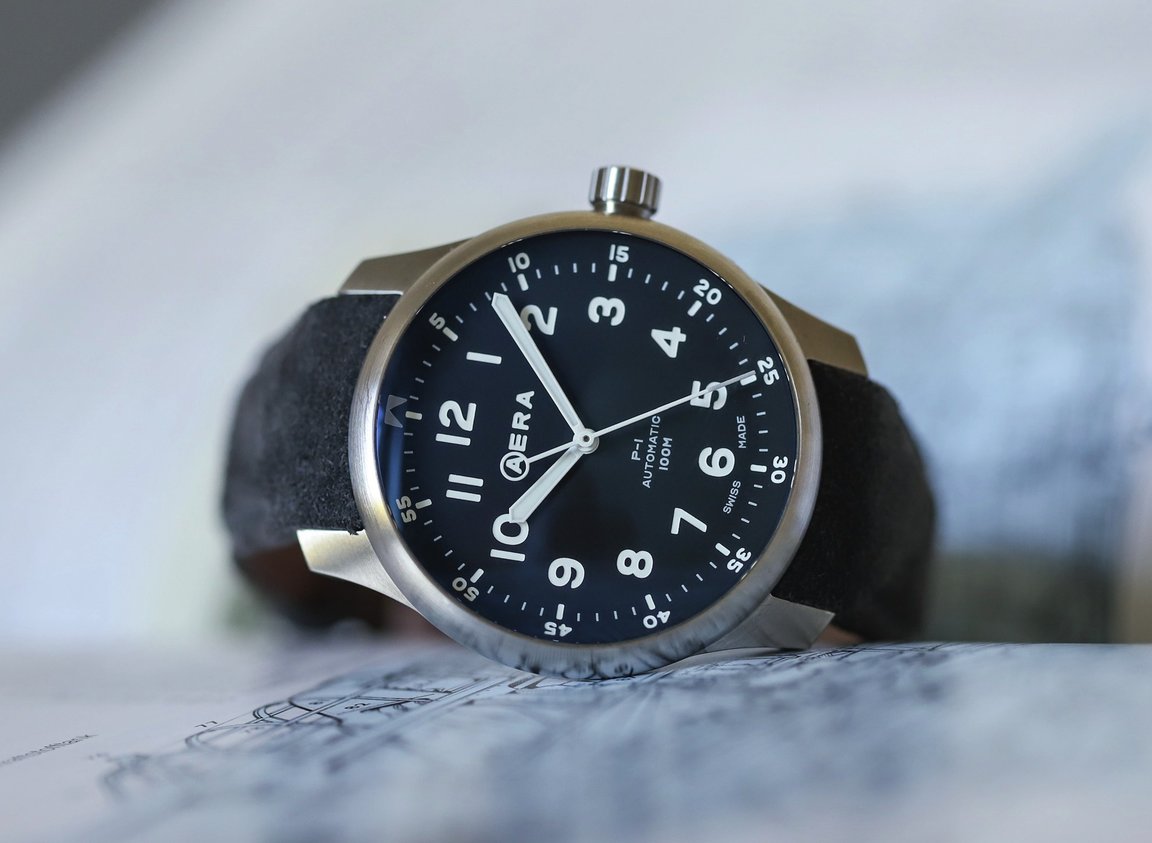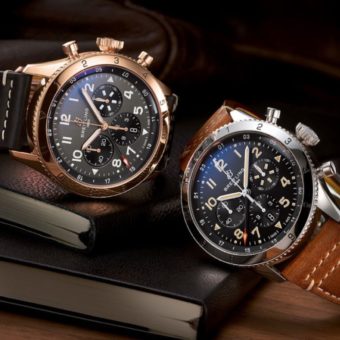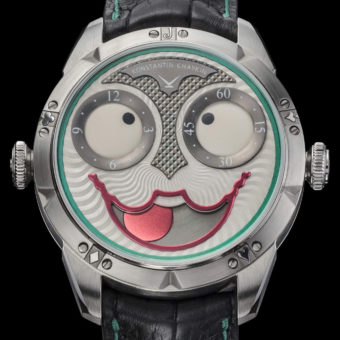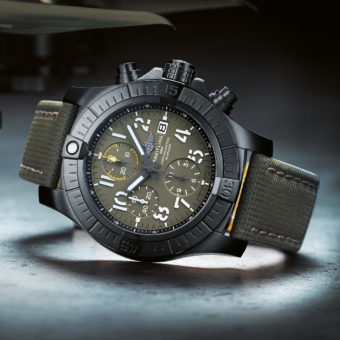This article was originally published in the November/December 2022 Issue of the WatchTime print magazine.
Horological startup Aera draws its inspiration from classic tool watches, but adds a modern twist with its rounded case designs. WatchTime performed a quick pre-flight check with the P-1 Pilot, one of the brand’s inaugural watch models.

In 1927, while working for the National Advisory Committee for Aeronautics (NACA), Fred Ernest Weick (July 14, 1899 – July 8, 1993) also headed the development of a streamlined, low-drag engine cowling for radial airplanes for which he would win the Collier Trophy just two years later. The NACA cowling represented a major advance in aerodynamic drag reduction, and ultimately fuel efficiency. In this aspect, looking straight from the top at the round bezel of the P-1 Pilot from Anglo-Swiss brand Aera feels very much like standing in front of a silver-colored airplane of such design, and it would certainly have been interesting to bring the P-1 Pilot to NACA’s wind tunnel at Langley Aeronautical Laboratory (LaRC or NASA Langley, the oldest of NASA’s field centers), to see how it would perform in terms of aerodynamics.

The 43-mm pilots’ watch comes with a domed, distortion-free sapphire crystal that blends seamlessly with the sloping brushed stainless-steel bezel. The crystal also matches the curved lugs and an overall round case design that, on first sight, appears to pay homage to Marc Newson’s designs for Ikepod, if it weren’t for the much more utilitarian matte
dial and classic hand design. The black pie-pan dial also creates a nice contrast to the curved crystal. According to Aera, the team felt “that in creating a clean, clear and uncomplicated design, a one-piece dial was the perfect choice.” Opting to go without a traditional rehaut (the French word for “flange”) obviously meant a more challenging approach in production, but the result is indeed supporting the “clean profile of Aera’s original design concept” nicely. Speaking of original design, watching the lollipop-style counterweight of the second hand briefly frame the two “A”s in the logo is a really nice touch, as are the refreshingly long hands, the luminous logo and dot on the crown. Same goes with the comparatively long (and also curved) buckle. It is different enough to catch one’s eye, but doesn’t get to a level where it simply becomes art for art’s sake.

Aera took offwith two models, the D-1 Diver and the P-1 Pilot. Both watches have similar case shapes that flow seamlessly into the curved crystal. The Diver, however, comes with a 44-mm case, rotating bezel with ceramic bezel and an increased water resistance of 300 meters, whereas the Pilot has a case rated to 100 meters. The watches are “assembled, tested and finished in Switzerland” and powered by a Sellita SW200-1 with 38-hour power reserve. Aera offers a 2-year warranty from the date of purchase and an additional year for everyone that registers the watch afterward.

The automatic movement chosen for the D-1 and P-1 obviously means that the brand’s main selling point will be the overall design, which Aera sees as a result of a “passion for functional tool watches.” In this aspect, drilled lugs (regardless of the quick-release spring bars used on the straps) would have been a nice detail to counterbalance the smooth design and further underline the tool watch character. In a nutshell, however, Aera did manage to offer a surprisingly fresh take on not one but two rather traditional categories, even if the engines used do not offer that much variety for collectors. More importantly, the Aera P-1 Pilot definitely doesn’t belong in the category of items that have to be removed before flight.
To learn more about Aera, click here, and to subscribe to the WatchTime print magazine, click here.






